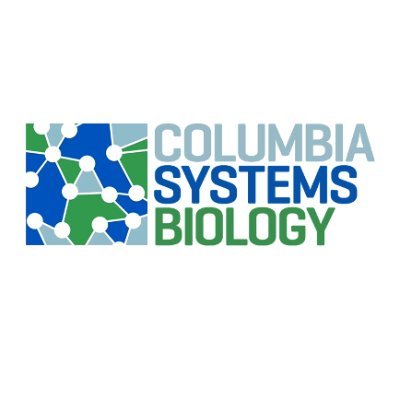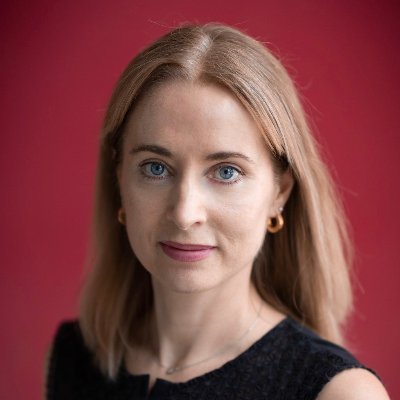
Rabadan Lab @ Columbia University
@RabadanLab
Followers
113
Following
31
Media
30
Statuses
86
Our scientific interests lie in developing computational tools to model and understand the dynamics of biological systems through the lens of genomics.
Joined July 2022
Don't miss the AI Meets Cancer Research Symposium Nov 29-30! Learn from leading experts to discover how AI may revolutionize the field of cancer research to help us find innovative solutions. Mark your calendars and be part of this incredible event! https://t.co/n3wL9AfbgQ
2
3
13
#ViromeOfManhattan. Rich dataset of host/pathogen data, collected in #NYC during 2 years of active sampling for endemic #RespiratoryViruses, reveals the transcriptomic effect of infections presenting with different symptomatology & etiology #PLOSBiology
https://t.co/bZskIFT18z
0
1
3
#ViromeOfManhattan. Rich dataset of host/pathogen data, collected in #NYC during 2 years of active sampling for endemic #RespiratoryViruses, reveals the transcriptomic effect of infections presenting with different symptomatology & etiology #PLOSBiology
https://t.co/bZskIFT18z
0
1
1
From all of us in the Department of Systems Biology, Warmest wishes for a happy holiday season and a wonderful New Year!
0
3
5
More details and examples in the paper https://t.co/38tE19vS8f. Don't forget to check out the package https://t.co/P6wJD1d6Wn and start your favorite *spatially informed* analysis right away!
github.com
A Unified and Modular Framework to Incorporate Structural Dependency in Spatial Omics Data - JiayuSuPKU/Smoother
0
3
4
[8/n] Finally a shoutout to the amazing team especially JB, @alexanderfuxi and my supervisors @david_a_knowles @RabadanLab! Excited to have the first major piece of my PhD out and it’s been an incredible journey so far. Hopefully more to come in 2024!🤞
1
2
3
[7/n] Most importantly, what new biology can we learn?👨🔬In colon cancer, we discover distinct spatial localization patterns of plasma cell subtypes (IgG+ in lesion and IgA+ in mucosa), which is reported of clinical interests, and link them to fibroblast-related matrix remodeling.
1
1
3
[6/n] Example 2⃣: Slide-seqV2 data is often too sparse to blend into single-cell atlases. Extending SCVI, we provide the first *spatially aware* joint embeddings of spatial and single-cell human prostate data, removing batch effects and reducing ambiguity in label transfer.
1
2
4
[5/n] When is spatial modeling useful? Always, but even more so with noisy data. Example 1⃣: When using deconvolution to map transcriptomic cell types to epigenomic CUT&Tag data, biologically coherent embryonic compartmentalization is revealed only under spatial regularization.
1
1
2
[4/n] Rethinking spatial analysis. Spatial omics data are still omics data and thus need not be treated as fundamentally different. Our solution? A new pretraining-finetuning paradigm where one model can accommodate data of varying and even zero spatial structures. Example in DR:
1
2
3
[3/n] How to represent spatial dependency? 🧠Through *spatial priors*, Smoother encourages coherence of any spatial variable of interest in a unified, task-independent mechanism. The separation of prior from models also allows the joint analysis of spatial and non-spatial data.
1
2
3
[2/n] What makes spatial data special? 🗺️Sample relatedness. Adjacent spots are more similar, and the similarity decreases with distance. Such patterns are observed across technologies, modalities, and tissues (even in tumor microenvironment) and are NOT technical artifacts.
1
2
4
Frustrated that you must reinvent the wheel when applying your favorite single-cell analysis tools to #SpatialOmics data? 📢Introducing a new framework to bridge the two worlds! Check out our latest work Smoother on spatial modeling at https://t.co/Z2ab2p4IJJ! Highlights [1/n]
genomebiology.biomedcentral.com
Spatial omics technologies can help identify spatially organized biological processes, but existing computational approaches often overlook structural dependencies in the data. Here, we introduce...
1
11
47
One of the original motivation of developing GET and the corresponding AF2 multimer screening is to facilitate the study of fusion TFs which changes the activation condition of gene programs. Attach please find some potentially interesting plots for FOXO1 IDR-EP300 TAZ2.
0
1
2
Exciting news! In April, we'll be in San Diego presenting some of our work at the AACR 2024 conference! #CancerResearch #AACR2024 🧠👩💻🩺
1
2
4
The AIMCR Symposium welcomes speaker Prof. Dr. Natasa Przulj (@NatasaPrzulj @icreacommunity ), an ICREA at Barcelona Supercomputing Center. We're eager to hear how network science and AI for precision medicine may move cancer research forward! https://t.co/Xr3VzOMuMF
0
0
1
The AIMCR Symposium welcomes speaker Dr. María Rodrίguez Martίnez (@IBMResearch), IBM Research. We're excited to learn how deep learning and AI-driven personalized drug modeling may innovative the investigation of cancer! https://t.co/Xr3VzOLWX7
0
0
0
The AIMCR Symposium welcomes speaker Dr. Yufeng Shen (@YufengShen07 @ColumbiaMed ) from Columbia University Medical Center. We're excited to learn how the intersection of human genetics and computer science is moving cancer research forward! https://t.co/Xr3VzOLWX7
0
0
1
Excited to present our lab's work on #Cancer #patient - #clinicaltrials matching powered by #AI at the AIMCR Symposium. Special mention to @majdabd33 who is pushing this effort in the context of the #EOSC4Cancer project. #bioinformatics #research
The AIMCR Symposium welcomes speaker Dr. Macha Nikolski (@MachaNikolski @CNRS), CNRS Cellular Genetics Institute! We're eager to hear how AI-driven research advances cancer and microbiology studies! https://t.co/Xr3VzOMuMF
0
4
7








